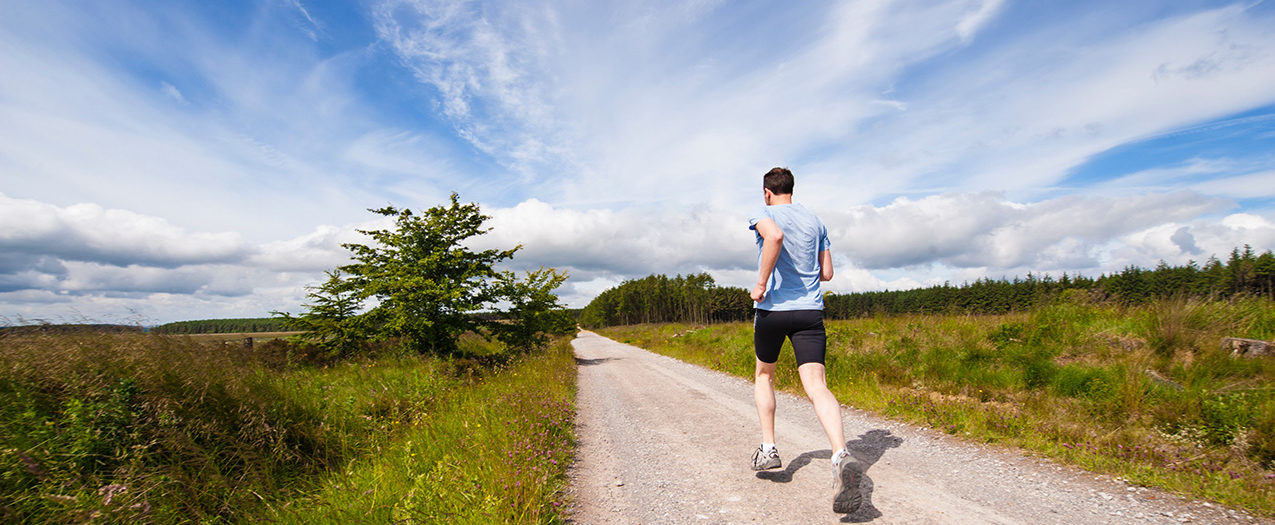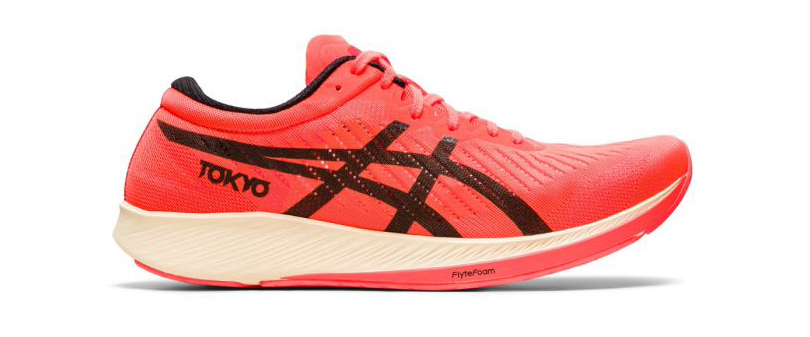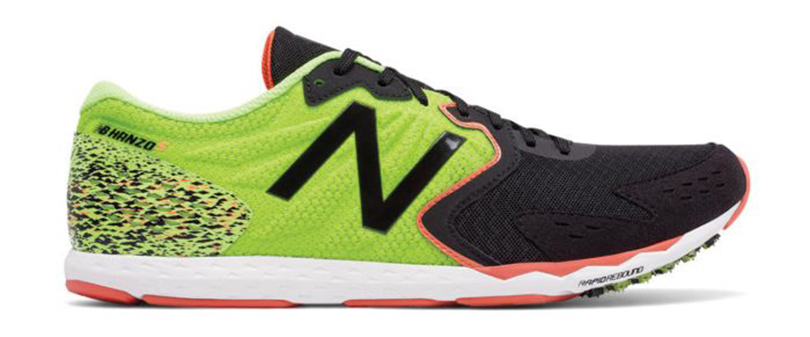Updated: February 2025
As runners, we’re always looking for ways to improve our performance and prevent injuries. One of the most debated topics in the running community is the choice between traditional and minimalist running shoes. This article will explore the advantages and disadvantages of both, helping you make an informed decision for your running journey.

Understanding traditional running
The traditional running approach tends to encourage runners to wear shoes that provide cushioning or extra support depending on the runner’s foot type, and in some cases is less concerned with technique. Running shoes designed for traditional running have a lot of cushioning, which encourages runners to run heel to toe with the heel as the first point of contact.
Casual and new runners are usually traditional runners. These runners are either inexperienced and have not paid much attention to their running technique or haven’t run enough to experience an unfortunate running injury due to improper form.
What type of shoes are better for traditional runners?
Traditional running shoes are manufactured with the mindset that the best way to avoid injury is by cushioning or stabilizing the foot. Therefore, the average traditional running shoe is usually designed with thick material under the insole with different levels of foam firmness.
Traditional running shoes with more cushion and motion control tend to be effective for people with previous injuries or trauma to their feet (broken bones, surgeries, or ruptured tendons/ligaments), which would have caused long-term changes to the normal foot mechanics.

Image credit: Asics Women’s Metaracer Running Shoe
There are 3 types of traditional running shoes:
- Neutral shoe with some cushioning and some support for “normal” feet
- Cushioned shoe for those with high arches, supinated feet
- Motion control shoe for those who have flat arches and overpronate
Advantages & Disadvantages Of Traditional Running Shoes
The ample cushioning in a traditional running shoe is meant to cushion the feet on hard surfaces and lessen the impact of the heel strike. We’ve included some pros and cons of traditional running shoes below:
Advantages Of Traditional Running Shoes
- Traditional running shoes can be used to promote healing when there are feet injuries or trauma, such as broken bones, surgeries, or ruptured tendons/ligaments.
- Traditional running shoes can compensate for leg-length or other biomechanical issues.
- Besides for use in injury or in the case of biomechanical issues, traditional running shoes do not offer any advantages when compared to a minimalist running approach.
Disadvantages Of Traditional Running Shoes
- Traditional running shoes don’t encourage natural movement of the foot.
- Traditional running shoes encourage heel-first stride, which is counter to the way the human foot evolved. If the heel is the first part of the foot to make contact with the ground, this contact is usually in front of the person. When the foot strikes in this position (as opposed to directly underneath the body, as what happens with the minimalist approach), this slows their forward momentum. They now have to pull the leg back and under themselves, which wastes a lot of energy and reduces the person’s speed. If the runner makes contact with their foot under their body, it results in a smooth stride with less energy needed.
- Traditional running shoes are heavier than minimalist running shoes.
- Traditional running shoes provide external stability for our feet/arches that is not actually needed. The muscles, bones, ligaments and tendons provide enough support for our feet to run with minimal cushioning. Some people may be born with flat feet, but there’s no evidence to suggest that this leads to more running injuries — it’s a theory that’s never been fully proven.
The rise of minimalist running
Minimalist running is a recently revived approach to running that focuses on being mindful of your technique and how your foot interacts with the ground. It also involves minimizing the cushioning and support in your shoes, to mimic the feeling of running barefoot.
Many long-term runners are choosing minimalist running shoes because they allow the foot to move naturally and encourage the midfoot or forefoot to make the initial contact with the ground. Developing a natural stride increases foot strength, leg strength, and flexibility, and can result in fewer repetitive motion injuries. Trail runners claim that the lack of cushioning in a minimalistic shoe lets them feel the ground and know what is underfoot. Minimalist runners believe that developing a natural stride results in less injuries and is better for the body long-term.
What type of shoes are better for minimalist runners?
Minimalist runners prefer shoes that do not restrict their movement and allow their feet and ankles to move naturally. A shoe meant for minimalist running will be lightweight and flexible with less cushioning and a zero-drop heel (which means that the height of the shoe is the same from the forefoot to the heel).

Image credit: New Balance Men’s Hanzo S Racing Shoe
At its essence, the minimal runner is lighter because of less cushioning, is closer to the ground, and has a lower heel-to-toe ramp angle so that the foot can sit almost flat in the shoe. This shoe may be too extreme for most minimalist runners.
Advantages & Disadvantages Of Minimalist Running Shoes
Minimalist running shoes have a zero-drop heel and wider toe platform meant to encourage an unrestricted stride. Runners can absorb the impact of their feet hitting the ground naturally by using the muscles, tendons, ligaments and bones in their feet, ankles, knees and hips — which they were designed to do. We’ve included some pros and cons of minimalist running shoes below:
Advantages Of Minimalist Running Shoes
- Minimalist running shoes reduce impact (ground reaction force). This is because the force of impact is better absorbed through the person’s foot, ankle, knee and hips using muscles, tendons and ligaments with the improved technique of not landing heel first.
- Minimalist running shoes encourage a natural stride by reducing stride length and reducing heel striking.
- Minimalist running shoes give you the ability to feel what is underfoot, which gives the runner more control over his leg and foot especially on uneven terrain.
- Minimalist running shoes lessen injuries caused by repetitive movements and running.
- Minimalist running shoes are lighter than traditional running shoes.
Disadvantages Of Minimalist Running Shoes
- Minimalist running shoes offer less support for those with injury or trauma to the foot.
- Foot strength and flexibility must be built up gradually with minimalist running shoes to avoid injury.
- Minimalist running shoes require more thought to running style and technique.
What is the difference between traditional running and minimalist running?
The main difference between traditional running and minimalist running comes down to technique.
Traditional runners can often give less focus on technique as the shoe is meant to absorb impact and compensate for a lack of foot strength and stability. This generally means that traditional runners have a heel-first stride, which increases impact and in the long term can cause injury and joint-pain.
Minimalist running requires a person to be more aware of their technique so they can build up the foot/leg/core strength and flexibility needed to run with shoes that provide less support and cushioning.
Minimalist shoes encourage a natural style of running, so the body adjusts and develops a technique that uses the body’s own muscles, tendons and ligaments to absorb impact. It also forces the runner to land more on the mid foot which can help prevent injuries.
Is there a type of running that is better to avoid injury overall?
For most people, we recommend a minimalist approach. This style of running encourages the body to react naturally and build up strength and flexibility. Minimalist running shoes also encourage running on your mid foot, which puts the point of contact underneath your body reducing the impact forces, the amount of time that your foot is in contact with the ground, and the amount of energy required to propel you forward. This means shorter and lighter strides.
Additionally, adapting your running style to the minimalistic approach can be a good way to improve both your time and endurance, as it brings you closer to the ideal 180 strides per minute that elite runners aim to reach.
Whatever your running style, remembember that it is important to transition slowly into a new style or you risk injuring yourself.
How do you start the transition to a more minimal running approach?
After purchasing a well-fitted pair of minimalist running shoes, the most important thing is to take an adequate amount of time while transitioning. Usually about 6 to 12 months is a reasonable timeline for the transition-to-minimal for most runners.
Most injuries that occur because of this change in running technique are due to people trying to progress too quickly to the minimalist approach without giving their body’s enough time to adapt to the new stresses and loads. They simply do too much too fast. This fatigues the ligaments, tendons, bones and muscles by not providing enough time to rest and heal, which eventually leads to injury.
Take the following precautions to ensure a safe switch:
- Ensure a safe cool down and warm up period. The body needs about a five-minute warm up in order to increase the body’s temperature, heart rate and rate of breath. At the start of your run, aim to work your way up gradually from a brisk walk to the pace you intend to run over five minutes. Never forget to include a five-minute cool down as well, as this allows the body to release built up lactic acid so that you’re not sore the next day.
- Dramatically decrease your daily mileage. If you’re used to running 10 km, save the last 1 – 2 minutes of the run for the minimalist technique. During this time, run at 180 strides per minute (90 steps for each foot or 30 steps for one foot in a 10 second period), don’t land on your heel, and maybe even quickly change your shoes if needed. Do this for a week while running 4 to 5 days a week, so that you can have a couple of days off for tissues to rest and recover. Then, slowly add another 1 – 2 minutes at the end of the run every week as your body gets used to the changes in demands on the body. Over the course of several months, you can work your way up to running the complete 10 km with a minimalist technique — without injuring the body!
- Start with a walk-run program. If you’re just starting to run again after some time off, or if you haven’t run before, start with a walk-run program and run with the minimalist approach right from the beginning. This will help your body slowly adapt to the forces and stresses of running which will reduce the chances of injury. For more guidance on the walk-run program and a more detailed example of it in action, visit our blog on How To Prevent A Foot Or Ankle Injury While Running.
- Increase flexibility in the heel and toes. To prepare your foot, do some “self soft tissue work” by crossing your lower leg over your other knee then firmly pushing your fingers and thumb into the soles of your feet while flexing your toes back and forth. Do this for 5 minutes, 2-3 times a day to condition the fascia in your feet by manually lengthening and shortening it. The Achilles tendon is another important tendon to stretch for the transition process, which can be done by hanging the heel off the edge of a step for thirty seconds, with three repetitions twice a day. For additional stretches we recommend for runners, see our post on How To Prevent A Foot Or Ankle Injury While Running.
- Strengthen hips, core muscles, and legs. Strong hips are an essential component in preventing injuries for runners. Because many of us spend so much of our lives seated, our hip muscles are not prepared for the work that’s required of them when running, which can lead to compensation injuries. As with any physical activity, core muscle strength in the back and abdominals helps with agility, posture and balance. Finally, making sure that your legs are ready to carry the weight of your body as you run through daily strengthening exercises will help immensely.
Example Of A 2-3 Month Minimalist Running Program
Here is a good example of a 2-3 month program in which the goal is to run for 30 consecutive minutes with the minimalist approach:
- Start with going through 3 repetitions of running for a minute and walking for a minute. Do this 4-5 times a week, but add one repetition each day until you are doing 15 repetitions.
- Progress to 3 repetitions of a 2 minute run and a 1 minute walk. Continue with doing this 4-5 times a week, adding one repetition a day until you are performing 10 repetitions.
- Progress to 3 repetitions of a 3 minute run and a 1 minute walk. Do this 4-5 times per week, adding one repetition per day until you are performing 8 repetitions.
- Next, do 2 repetitions of running 4 minutes and walking 1 minute and work your way up to performing 6 repetitions as done previously.
- Now do 1 repetition of running for 9 minutes and walking for 1 minute. Do this every second day adding one repetition each day up to 3 repetitions.
- Progress to one repetition of a 14 minute run to a 1 minute walk. Then add one more repetition for the next run.
- For the home stretch, run for 20 consecutive minutes, miss a day and run for 25 consecutive minutes, miss a day and run for the full 30 minutes!
Want to learn more about avoiding injury with the right running technique and shoe?
Visit our blog on How To Prevent A Foot Or Ankle Injury From Running, or reach out to one of our physiotherapists for an appointment. No referral from your doctor is necessary!
